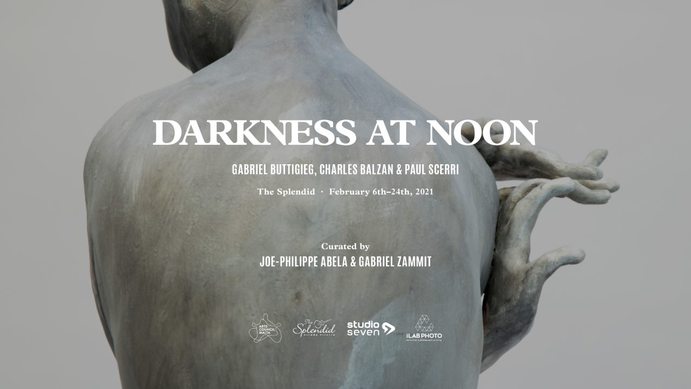Darkness at Noon – three Maltese artists, each known for the strong, and sometimes strange, identity of their works, come together for this exhibition that will be held at the Splendid, in Valletta. The element that brings them together is the ‘uncanny’, that eerie and somewhat preternatural sensation that is defined by a moment, a disturbance in the ether, sometimes fleeting, at others not so much.
Painter Gabriel Buttigieg, photographer Charles Balzan and ceramist Paul Scerri each respond to this motif with a collection that is necessarily radically different in terms of medium and style, but that finds its origin within the same human emotions.
Curated by Gabriel Zammit and Joe-Philippe Abela, Darkness at Noon seeks to explore our most primitive instincts, using the creative process to build a visible structure of this ‘uncanny’, based on an examination of the human depths that are buried in our very consciousness.
“This uncanny relates to a time in moment when that which is supposed to be familiar becomes strange. Thus, in the Bible, we have the moment when Christ dies on’ the cross. In the Odyssey, the uncanny occurs when Ulysses comes home and finds the suitors wooing his wife. In Koessler’s eponymous work, when things got dodgy in the Stalin era. For the purpose of this exhibition, even contemporary moments can be described as Darkness at Noon, with what is happening nationally and internationally. Thus, each of the artists in this case offers his own take on this concept, through different media,” Gabriel Zammit says.
Co-curator Joe-Philippe, who initially brought the artists together, concurs, explaining that the idea is for the viewer to take in these interpretations and make up their own mind.
“I wanted to challenge the viewer. My approach is that it is not for the artist and the curators to tell the viewer what they are seeing. I want the exhibition to inspire people to be curious, to question their thoughts and feelings. Yes, the exhibition will make you feel unease, but it will also welcome you,” he explains.

Thus, Gabriel Buttigieg’s background in psychology plays on the idea of the uncanny, as he develops metaphors inspired by anthropology, myths and literature to create a series of paintings that mirror the subconscious.
Charles Balzan uses a series of family photographs as a starting point, extending the concept to further expose his subjects’ vulnerabilities, stripping down the layers we all build around us through the use of extreme emotions.
Paul Scerri takes a different aspect, basing his works on different ideas of the self as affected by contemporary society, creating different facets of this self that form a narrative. The subtext, he says, is up to the viewer to interpret.
Thus, the very idea of Darkness at Noon is organically informed and fashioned by the times that we live in. It is, in its purest form, a manifestation of 21st century living, adulterated by the effects of a global pandemic. Through these works, the three artists dig deep into humanity’s hidden nature, deconstructing beliefs, values, and symbols that are universally cherished in order to bring out the compulsions that shape us as products of modern society.
Darkness at Noon runs at the Splendid, in Valletta, between February 6 and 24, Monday to Sunday between 10am and 6pm. The exhibition is supported by the Malta Arts Council Project Support Grant and includes a catalogue featuring essays by Clive Zammit and Giulia Privitelli.
For more arts-related pieces check out this new artistic platform called Artz-ID or this digital exhibition by Ray Piscopo.
